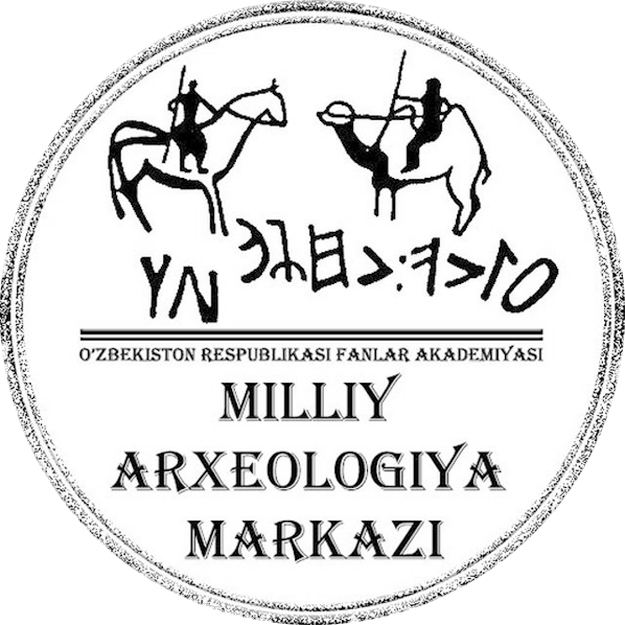Academics of the Center
 Gulamov Yakhya Gulamovich (1908-1977). Doctor of Historical Sciences, Professor, Academician of the Academy of Sciences of Uzbekistan (1966). Historian, archaeologist, orientalist. 1956-1959 headed the department of ancient and medieval history, and was also the acting director of the Institute of History and Archeology of the Academy of Sciences of Uzbekistan. A talented researcher and organizer of science, the founder of the scientific school of Uzbek archaeologists and historians who studied the centuries-old past of the peoples of Uzbekistan and their rich cultural heritage. The systematic study of archaeological monuments, medieval written sources allowed him to solve a number of urgent problems of the political, socio-economic history of the peoples of Central Asia from a fundamental scientific standpoint. Scientific works of Ya.G. Gulamov on the history of irrigation in Uzbekistan, which laid the foundations for this important area of research, are also of great national economic importance. These works reveal the reasons for the desolation of entire agricultural oases, associated not only with socio-political events, but also with the economic activities of the agricultural population. The scientist's Peru owns more than 100 scientific works, including monographs and textbooks.
Gulamov Yakhya Gulamovich (1908-1977). Doctor of Historical Sciences, Professor, Academician of the Academy of Sciences of Uzbekistan (1966). Historian, archaeologist, orientalist. 1956-1959 headed the department of ancient and medieval history, and was also the acting director of the Institute of History and Archeology of the Academy of Sciences of Uzbekistan. A talented researcher and organizer of science, the founder of the scientific school of Uzbek archaeologists and historians who studied the centuries-old past of the peoples of Uzbekistan and their rich cultural heritage. The systematic study of archaeological monuments, medieval written sources allowed him to solve a number of urgent problems of the political, socio-economic history of the peoples of Central Asia from a fundamental scientific standpoint. Scientific works of Ya.G. Gulamov on the history of irrigation in Uzbekistan, which laid the foundations for this important area of research, are also of great national economic importance. These works reveal the reasons for the desolation of entire agricultural oases, associated not only with socio-political events, but also with the economic activities of the agricultural population. The scientist's Peru owns more than 100 scientific works, including monographs and textbooks.
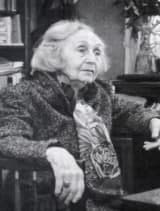 Pugachenkova Galina Anatolyevna (1915-2007). Doctor of Art History, Professor, Academician of the Academy of Sciences of the Republic of Uzbekistan (1984), art critic, historian. She defended her Ph.D. thesis on the topic: "Architecture of Central Asia of the Nawai epoch". Since 1960, she headed the sector of the history of arts and architecture at the Institute of Art History, where she created and fruitfully worked the Uzbekistan Art Critic Expedition, which enriched science with outstanding discoveries at the settlements of Khalchayan, Dalverzintepe, etc. Her ideas and conclusions about the art of the Kushan were widely included in the national and world science. Generalizing concepts of historical and cultural processes have had a significant impact on the development of art history science. Since 1966 - Member of the International Council of Monuments and Sites. I CJMJS. G.A. Pugachenkova - Honorary Doctor of the University of Strasbourg, Corresponding Member of the German Archaeological Institute and the Italian Institute of the Middle and Far East, Honored Scientist of the Republic of Uzbekistan, Knight of the Order of the French "Academic Palms", twice laureate of State Prizes (Hamza and Beruni). Since 1994 G.A. Pugachenkova worked as a leading researcher at the Institute of Archeology. The scientist's Peru owns more than 600 scientific works devoted to the history of architecture, archeology, visual and applied arts of the peoples of the East. G.A. Pugachenkova had numerous government awards
Pugachenkova Galina Anatolyevna (1915-2007). Doctor of Art History, Professor, Academician of the Academy of Sciences of the Republic of Uzbekistan (1984), art critic, historian. She defended her Ph.D. thesis on the topic: "Architecture of Central Asia of the Nawai epoch". Since 1960, she headed the sector of the history of arts and architecture at the Institute of Art History, where she created and fruitfully worked the Uzbekistan Art Critic Expedition, which enriched science with outstanding discoveries at the settlements of Khalchayan, Dalverzintepe, etc. Her ideas and conclusions about the art of the Kushan were widely included in the national and world science. Generalizing concepts of historical and cultural processes have had a significant impact on the development of art history science. Since 1966 - Member of the International Council of Monuments and Sites. I CJMJS. G.A. Pugachenkova - Honorary Doctor of the University of Strasbourg, Corresponding Member of the German Archaeological Institute and the Italian Institute of the Middle and Far East, Honored Scientist of the Republic of Uzbekistan, Knight of the Order of the French "Academic Palms", twice laureate of State Prizes (Hamza and Beruni). Since 1994 G.A. Pugachenkova worked as a leading researcher at the Institute of Archeology. The scientist's Peru owns more than 600 scientific works devoted to the history of architecture, archeology, visual and applied arts of the peoples of the East. G.A. Pugachenkova had numerous government awards
 Askarov Akhmadali, born in 1935 Doctor of Historical Sciences, Professor, Academician of the Academy of Sciences of the Republic of Uzbekistan (1987) Historian, archaeologist. He worked at the Institute of History and Archeology of the Academy of Sciences of the Republic of Uzbekistan, a researcher, deputy director for scientific work (1966). Then director of the Institute of Archeology (1970-1980 and 1983-1987). He defended his Ph.D. thesis on the topic "Lower Zarafshan in the Bronze Age", and in 1977 in Moscow - his doctoral thesis on "The Bronze Age of Southern Uzbekistan (to the problem of the development of local foci of ancient Eastern civilizations)". He was the chairman of the Department of Social and Humanitarian Sciences of the Presidium of the Academy of Sciences of the Republic of Uzbekistan (1984-1998) and at the same time director of the Institute of History of the Academy of Sciences of the Republic of Uzbekistan. (1991-1995). The range of scientific interests of Academician A. Askarov is unusually wide: the history of the formation of ancient agricultural and pastoral cultures of the Bronze Age and early Iron Age in Central Asia, the formation of early urban culture and early statehood on the territory of Uzbekistan, ethnogenesis and ethnic history of the Uzbek people, the origins and formation of Zoroastrianism, the history of the national species kurash sports based on archaeological data, etc. He owns the honor of discovering an ancient agricultural center of the Near-Asian type and the identification of a peculiar (proto-city) Sapalli culture, the opening of a unique temple at the settlement of Zharkutan. A. Askarov is the author of over 450 scientific works, of which more than 50 are in foreign languages, 16 monographs, 1 textbook and 8 teaching aids. Laureate of the State Prize. Abu Raikhan Beruni (1985), Honored Scientist of the Republic of Uzbekistan (1995).
Askarov Akhmadali, born in 1935 Doctor of Historical Sciences, Professor, Academician of the Academy of Sciences of the Republic of Uzbekistan (1987) Historian, archaeologist. He worked at the Institute of History and Archeology of the Academy of Sciences of the Republic of Uzbekistan, a researcher, deputy director for scientific work (1966). Then director of the Institute of Archeology (1970-1980 and 1983-1987). He defended his Ph.D. thesis on the topic "Lower Zarafshan in the Bronze Age", and in 1977 in Moscow - his doctoral thesis on "The Bronze Age of Southern Uzbekistan (to the problem of the development of local foci of ancient Eastern civilizations)". He was the chairman of the Department of Social and Humanitarian Sciences of the Presidium of the Academy of Sciences of the Republic of Uzbekistan (1984-1998) and at the same time director of the Institute of History of the Academy of Sciences of the Republic of Uzbekistan. (1991-1995). The range of scientific interests of Academician A. Askarov is unusually wide: the history of the formation of ancient agricultural and pastoral cultures of the Bronze Age and early Iron Age in Central Asia, the formation of early urban culture and early statehood on the territory of Uzbekistan, ethnogenesis and ethnic history of the Uzbek people, the origins and formation of Zoroastrianism, the history of the national species kurash sports based on archaeological data, etc. He owns the honor of discovering an ancient agricultural center of the Near-Asian type and the identification of a peculiar (proto-city) Sapalli culture, the opening of a unique temple at the settlement of Zharkutan. A. Askarov is the author of over 450 scientific works, of which more than 50 are in foreign languages, 16 monographs, 1 textbook and 8 teaching aids. Laureate of the State Prize. Abu Raikhan Beruni (1985), Honored Scientist of the Republic of Uzbekistan (1995).
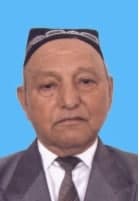 Muxamadjanov Abdulahad Raximjonovich (1931-2016), Doctor of Historical Sciences, Professor, Academician of the Academy of Sciences of the Republic of Uzbekistan, orientalist, archaeologist. Since 1956 he worked as a researcher at the Institute of History and Archeology of the Academy of Sciences of the Republic of Uzbekistan. 1980-1983 Director of the Institute of Archeology of the Academy of Sciences of Uzbekistan. In 1973 he defended his doctoral dissertation on the topic: "The history of irrigation in the lower reaches of the Zarafshan (from ancient times to the beginning of the twentieth century)." The area of scientific interests of A.R. Mukhamedzhanov is the history of ancient and medieval irrigation of Uzbekistan, as well as the archeology of the Bukhara oasis. A.R. Mukhamedzhanov is the author of more than 540 scientific and popular scientific works, textbooks and teaching aids for schools and universities of the Republic. A significant contribution of the researcher is the conduct of extensive archaeological work on the territory of Bukhara, urban and rural settlements of the oasis. On their basis, the origins, dynamics and culture of the largest urban centers of the region were revealed, the 2500th anniversary of the city of Bukhara was held. A.R. Mukhamedzhanov carried out a number of fundamental works on the history of the emergence and development of irrigated agriculture in Central Asia and, in particular, identified the origins of the ancient irrigation of the lower reaches of the Zarafshan and Bukhara oasis. A.R. Mukhamedzhanov developed the issues of water resources of the Zarafshan Valley, highlighted the issues of the emergence of irrigated agriculture, the dynamics of the development of irrigation and hydraulic engineering in the era of antiquity and the Middle Ages.
Muxamadjanov Abdulahad Raximjonovich (1931-2016), Doctor of Historical Sciences, Professor, Academician of the Academy of Sciences of the Republic of Uzbekistan, orientalist, archaeologist. Since 1956 he worked as a researcher at the Institute of History and Archeology of the Academy of Sciences of the Republic of Uzbekistan. 1980-1983 Director of the Institute of Archeology of the Academy of Sciences of Uzbekistan. In 1973 he defended his doctoral dissertation on the topic: "The history of irrigation in the lower reaches of the Zarafshan (from ancient times to the beginning of the twentieth century)." The area of scientific interests of A.R. Mukhamedzhanov is the history of ancient and medieval irrigation of Uzbekistan, as well as the archeology of the Bukhara oasis. A.R. Mukhamedzhanov is the author of more than 540 scientific and popular scientific works, textbooks and teaching aids for schools and universities of the Republic. A significant contribution of the researcher is the conduct of extensive archaeological work on the territory of Bukhara, urban and rural settlements of the oasis. On their basis, the origins, dynamics and culture of the largest urban centers of the region were revealed, the 2500th anniversary of the city of Bukhara was held. A.R. Mukhamedzhanov carried out a number of fundamental works on the history of the emergence and development of irrigated agriculture in Central Asia and, in particular, identified the origins of the ancient irrigation of the lower reaches of the Zarafshan and Bukhara oasis. A.R. Mukhamedzhanov developed the issues of water resources of the Zarafshan Valley, highlighted the issues of the emergence of irrigated agriculture, the dynamics of the development of irrigation and hydraulic engineering in the era of antiquity and the Middle Ages.
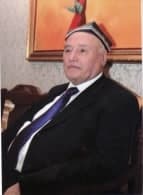 Islomov O‘tkir Islomovich (1932-2013), Doctor of Historical Sciences, Professor, Academician of the Academy of Sciences of the Republic of Uzbekistan (2000). In 1963 he defended his Ph.D. thesis on the topic "Neolithic culture in the lower reaches of Zarafshan". Since 1963 he worked as a researcher at the Institute of History and Archeology of the Academy of Sciences of Uzbekistan. With the establishment of the Institute of Archeology in 1970, he became the head of the Department of Ancient Archeology, and then the head of the Department of the Age of Stone and Bronze. Since that time, Utkur Islamovich and his associates have been actively creating a scientific "school of Samarkand archeology". Along with excavations in the lower reaches of Zarafshan, U.I. Islamov is actively studying the monuments of the Mesolithic era (XII-VIII centuries BC) in the Fergana, Tashkent and Surkhandarya regions and previously unknown. The results of the study of archaeological sites of the Mesolithic era made it possible for the first time to fill in an extensive chronological gap in the ancient history of Uzbekistan. Systematic excavations of the Mesolithic cave monuments Obishir I, V, Machai have shown that they are unique objects of ancient history, giving abundant and varied information for a detailed reconstruction of the economy and life of the inhabitants of the Mesolithic era. He was the first to pose and solve the problem of ethnocultural development and cultural ties of the population of Uzbekistan in the Mesolithic era with the tribes of a number of historical and cultural regions of the Ancient East. The most important discovery in the study of the Mesolithic era of Uzbekistan is the evidence of the productive nature of the economy of the Mesolithic tribes. A deep analysis of the abundant material, a detailed typological classification of the stone industry and a number of local features characteristic of the Mesolithic monuments of Uzbekistan allowed U.I. Islamov to highlight the Obishir and Machay cultures. Long-term research work ended with the defense of a doctoral dissertation on the topic: "Mesolithic of Central Asia" (1977). In the Obi-Rakhmat cave (Tashkent region), during the work of the joint Uzbek-Russian expedition, the remains of an ancient man who lived 50 thousand years ago, combining the mixed characteristics of a Neanderthal and a modern man, were discovered, which until recently was considered unlikely. The finds of the bone remain of the Archanthropus in the cultural deposits of the Selungur site, the lower layers of which date back more than 1 million years, became sensational. Academician U. I. Islamov is the author of over 160 scientific works, including several fundamental monographs.
Islomov O‘tkir Islomovich (1932-2013), Doctor of Historical Sciences, Professor, Academician of the Academy of Sciences of the Republic of Uzbekistan (2000). In 1963 he defended his Ph.D. thesis on the topic "Neolithic culture in the lower reaches of Zarafshan". Since 1963 he worked as a researcher at the Institute of History and Archeology of the Academy of Sciences of Uzbekistan. With the establishment of the Institute of Archeology in 1970, he became the head of the Department of Ancient Archeology, and then the head of the Department of the Age of Stone and Bronze. Since that time, Utkur Islamovich and his associates have been actively creating a scientific "school of Samarkand archeology". Along with excavations in the lower reaches of Zarafshan, U.I. Islamov is actively studying the monuments of the Mesolithic era (XII-VIII centuries BC) in the Fergana, Tashkent and Surkhandarya regions and previously unknown. The results of the study of archaeological sites of the Mesolithic era made it possible for the first time to fill in an extensive chronological gap in the ancient history of Uzbekistan. Systematic excavations of the Mesolithic cave monuments Obishir I, V, Machai have shown that they are unique objects of ancient history, giving abundant and varied information for a detailed reconstruction of the economy and life of the inhabitants of the Mesolithic era. He was the first to pose and solve the problem of ethnocultural development and cultural ties of the population of Uzbekistan in the Mesolithic era with the tribes of a number of historical and cultural regions of the Ancient East. The most important discovery in the study of the Mesolithic era of Uzbekistan is the evidence of the productive nature of the economy of the Mesolithic tribes. A deep analysis of the abundant material, a detailed typological classification of the stone industry and a number of local features characteristic of the Mesolithic monuments of Uzbekistan allowed U.I. Islamov to highlight the Obishir and Machay cultures. Long-term research work ended with the defense of a doctoral dissertation on the topic: "Mesolithic of Central Asia" (1977). In the Obi-Rakhmat cave (Tashkent region), during the work of the joint Uzbek-Russian expedition, the remains of an ancient man who lived 50 thousand years ago, combining the mixed characteristics of a Neanderthal and a modern man, were discovered, which until recently was considered unlikely. The finds of the bone remain of the Archanthropus in the cultural deposits of the Selungur site, the lower layers of which date back more than 1 million years, became sensational. Academician U. I. Islamov is the author of over 160 scientific works, including several fundamental monographs.
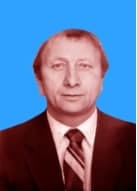 Buryakov Yuri Fedorovich (1934-2015). Doctor of Historical Sciences, Professor, Academician of the Academy of Sciences of the Republic of Uzbekistan. (1995), historian, archaeologist. The main scientific directions: problems of the history of mining and metallurgy, the historical topography of settlements and urbanization of the Tashkent region, Sogd and Central Asia in general, the history of chess. An important aspect of Yu.F. Buryakov is associated with the identification and preservation of archaeological sites. This work continued at the Institute of History and Archeology, where he worked as a senior researcher (1967-1970) and at the Institute of Archeology of the Academy of Sciences of the Republic of Uzbekistan (1970-1973 - scientific secretary, 1973-1979 - head of the department of work on new buildings, since 1979 - deputy director for science). Yu.F. Buryakov leads a large Chach-Ilak, later - Chach-Ustrushana archaeological expedition. For a long time at the Institute of Archeology, he headed the UNESCO program "The Great Silk Road - the path of dialogue between peoples", taking direct part in all events held both under the auspices of international organizations and in Uzbekistan. Author of over 550 scientific and popular scientific works, including over 10 monographs. Laureate of the State Prize, Beruni (1985).
Buryakov Yuri Fedorovich (1934-2015). Doctor of Historical Sciences, Professor, Academician of the Academy of Sciences of the Republic of Uzbekistan. (1995), historian, archaeologist. The main scientific directions: problems of the history of mining and metallurgy, the historical topography of settlements and urbanization of the Tashkent region, Sogd and Central Asia in general, the history of chess. An important aspect of Yu.F. Buryakov is associated with the identification and preservation of archaeological sites. This work continued at the Institute of History and Archeology, where he worked as a senior researcher (1967-1970) and at the Institute of Archeology of the Academy of Sciences of the Republic of Uzbekistan (1970-1973 - scientific secretary, 1973-1979 - head of the department of work on new buildings, since 1979 - deputy director for science). Yu.F. Buryakov leads a large Chach-Ilak, later - Chach-Ustrushana archaeological expedition. For a long time at the Institute of Archeology, he headed the UNESCO program "The Great Silk Road - the path of dialogue between peoples", taking direct part in all events held both under the auspices of international organizations and in Uzbekistan. Author of over 550 scientific and popular scientific works, including over 10 monographs. Laureate of the State Prize, Beruni (1985).



